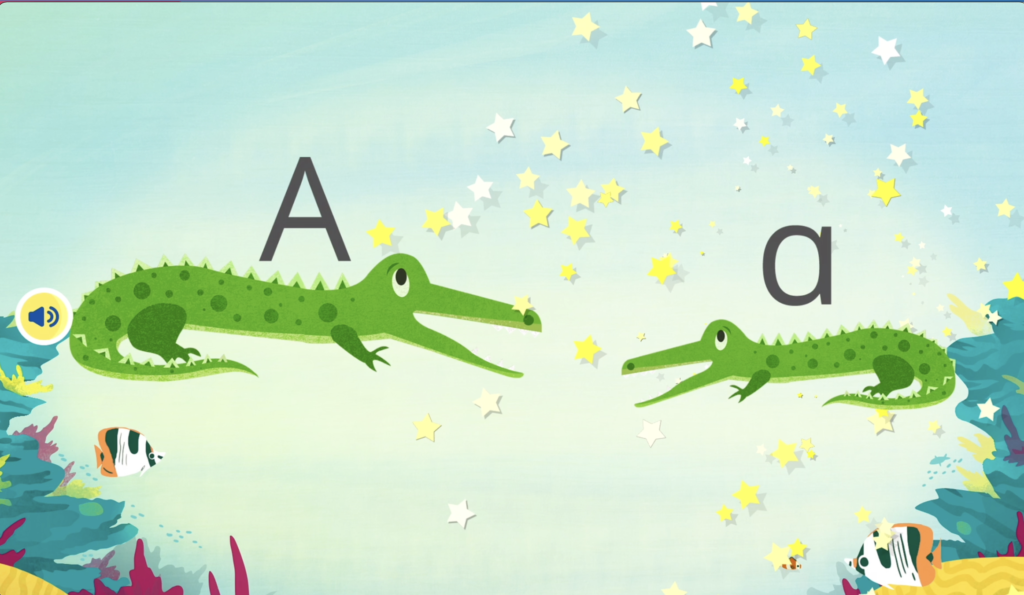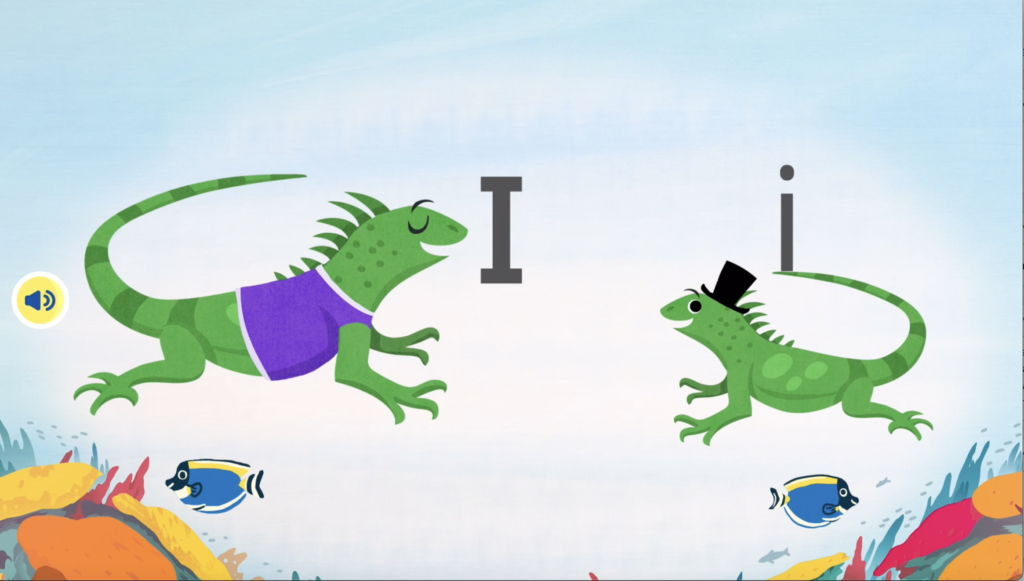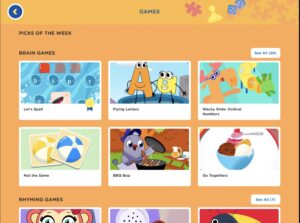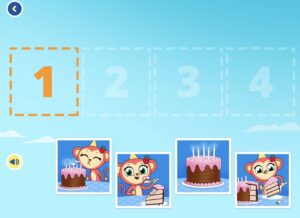If you’ve been looking into literacy apps for your kid, chances are that you’ve heard of the literacy app Learn with Homer!
Homer is a very popular app for learning to read, but…
Is it worth it? Is it the right choice for your child? How much does Homer cost? Does it cover any other subjects other than literacy? Does it offer a free trial?
This review addresses all of these questions.
By the end of the article, you will know exactly what to expect from the Homer app, and will be able to tell whether this app is the right choice for your child or not!
*Note: This is NOT sponsored content, and all opinions are my own. Learn with Homer did not pay me to write this review. This post may include some affiliate links, meaning I could get a little commission if you buy from them, at no additional cost to you. This helps keep the information on this blog free and available to everyone.
Homer in a nutshell
Highlights
– Great app to set up the right foundational skills children need to have to become fluent readers.
– It offers a great deal of customization options, based on your child’s reading level, age and personal preferences.
– It uses synthetic phonics to teach reading, the most effective approach to reading, according to the latest research.
– Beginner maths, social skills, arts, thinking and self-expression skills also included.
– Up to 4 different profiles per single account.
– Generous 30-day free trial.
Age group
Ideal for children from 2 up to 8 years old.
Price
30-day free trial.
12.99$/month after that, or annual subscription for $6.66/month.
Access free trial here!
What is the Learn with Homer app?
Learn with Homer (also called Homer reading app) is a literacy curriculum in an app. It is best-suited for children aged 2-6+, and follows an explicit, systematic, sequential, synthetic-phonics-based approach to teaching reading.
This is one the main reasons that attracted me to the Homer app in the first place. It was not just a game, but an entire curriculum! Besides, it claimed to follow what has been proven to be the most effective approach for teaching children to read!
IMPORTANT: AT THIS PARTICULAR TIME LEARN WITH HOMER IS OFFERING THIS SPECIAL PROMO. ACCESS TO IT ON THE LINK BELOW!
Get a 45-Day Free Trial + Save $10 off your first annual plan payment!
Explicit? Systematic? Synthetic?
I know, I’ve used so many “big words” already! Don’t worry, I will clarify what all of these terms mean! And, don’t worry, in reality, they are really simple to understand.
Let’s go through them together!
- Explicit meaning that the teacher (in this case, the app) will teach sound and letter correspondences to children in a direct manner. As opposed to a non-explicit approach, which relies on the student’s ability to work out the relationships between sounds and letters through repeated exposure.
- Systematic meaning that it is a planned approach (it follows a system).
- Sequential meaning that it follows a specific order to teach phonics.
- Synthetic-phonics based meaning that children are taught to read by blending the sounds of the letters in the words they are presented with, as opposed to analyzing the sounds in words after the word has been identified.
If you really want to understand even more about the synthetic phonics approach for teaching children to read, I recommend you read this post.
In other words, the app will take your child into a set path that starts with the introduction of a letter sound and its correspondent letter name and graphic representation (for instance, this is the sound /s/ -as in “snake”- and it is represented by the letter “s”), and moves towards reading and spelling words with that sound in conjunction with other sounds that the child has already mastered.
As more sounds and letters are introduced, your child will be able to read words of increasing difficulty simply by blending the sounds he/she is already familiar with.


The app also places a lot of importance on the development of Phonemic Awareness.
Phonemic Awareness is the ability of hear, identify and manipulate the individual sounds in words.
For instance, the word “cat” is formed by the individual sounds /k/ /a/ /t/. Someone with Phonemic Awareness can easily identify these three sounds, but also knows that when you add, replace or delete one of its sounds you can get new words (for instance, “cats” is formed by adding a new sound, “mat” is formed by replacing the initial sound, “at” is formed by deleting the initial sound…).
Phonemic Awareness is one of the cornerstones of reading instruction. In fact, it’s been found to be the number #1 predictor of future success at reading (and of reading failure).
Benefits of Learn with Homer
- Helping children develop Phonemic Awareness. As explained before, this is a key skill to become a successful reader.
- Uses synthetic phonics principles. As we’ve seen before, when we learn to read with synthetic phonics we familiarize with letter names and sounds and then blend those sounds to read words. We also use our knowledge of letter and sounds to spell simple words. This has been proven to be most effective approach in reading instruction.
- Focus on increasing vocabulary. This is another crucial element of preparing your child for reading success. As he/she is confronted with words to read, it will be harder for a beginner reader to figure out words that are not part of his/her vocabulary. Besides, the larger the vocabulary of a person, the better reading comprehension he/she will have.
- Learn-to-spell activities are also included. In these activities, your child needs to use their knowledge about sounds to attempt to spell words. This helps children understand that both reading (blending sounds to read words) and spelling (separating sounds to spell) are two sides of the same coin. They can use what they know about letter sounds both to read and to spell words. Both skills reinforce each other, as understanding letter sounds aids both reading and spelling.
- Lots of opportunities for review along the way. This is extremely important, as children need repetition and lots of opportunities to practice their skills, so new information gets stored in their long-term memory.
- Focus on storytelling and helping children fall in love with reading.
- The app allows for a great deal of customization. During the registration process, you will be asked a series of questions about your child’s age, knowledge of numbers and letters, but also about your child’s taste and preferences (is he/she into unicorns, princesses, cars, etc.) in order to make the experience more personal and in line with your child’s personality.
- Fun and engaging way to learn for children. My kids really enjoyed using the app! It has lots of great educational activities and games that do not feel like homework at all. The design is really nice, and the characters in the app are really cute. Besides, depending on the child’s age, the activities will be also be different, and appropriate to his/her maturity and literacy level.
- You can create up to 4 different profiles under the same account.
- It also includes activities and games to encourage numeracy, social skills, arts and self-expression skills.
- It offers a very generous 30-day free trial.
Cons of the Homer Reading App
Did the Homer app fully live up to the expectations I had?
Well, I must admit that the path that was set for my older child was a little bit too basic for her level, in my opinion.
Don’t take me wrong, though. The principles were right: the activities focused on letter names and letter sounds, she had lots of opportunities to develop her phonemic awareness skills, for blending sounds to read words, to practice spelling, etc., but the materials on her reading path were not challenging enough for her.
That doesn’t mean that older kids won’t have fun using it either or that it will be completely useless for them (as it will help them review and reinforce what they already know) but it is something to bear in mind. If your child is 6+, depending on your child’s literacy level, the learn-to-read path set for him/her might be too basic.
However, since they have a 30-day free trial, if you are in doubt, I guess you can always try and see!
However, if you have a young child, it is a different story.
At the time I first got the app, I had a 3 year-old toddler as well. She knew some letter names and sounds, but very few, really.
Setting time to consistently sit with her and work on had been on my to-do list for a good while, but you know how it’s like. Life’s so busy! Besides, it was trying to work out the right way to do it with her. As expected of a 3-year-old toddler, she had very little attention span. So, any teaching had to be done in a fun and engaging way!
The path this time was appropriate for her level.

This app really helped out with that first initial step of teaching letter names and sounds and develop phonemic awareness.
Besides, I know she is also developing through play other important skills, such us retelling stories, story sequencing, vocabulary, self-expression, arts or even basic numeracy.
What are the best things about Learn with Homer?
I like how much emphasis it puts on sounds.
Children are presented with letters in the following way: “this is the letter ‘a’, it makes the ahh sound.” And now… Let’s practice!
For instance, an activity could be (after being introduced to a sound) tapping on the words that contain that specific sound. Another activity could be to repeat the specific sound after the cute red monkey that gives the instructions on the app.
I also like that it includes learn-to-spell activities (based on the sounds your child has learned). Most beginning readers’ apps do not focus on spelling at all or tackle it as a completely separate skill. However, reading and spelling are interconnected!
Making children aware of this reversible nature of the language system (you can use your knowledge of sounds to both read and spell!) has great advantages, as both skills reinforce each other. Additionally, you will be paving the way to create a good speller too!
I also appreciate the customization options it offers. This makes children want to use the app, and makes the learning experience more personal, more fun and engaging.
I also like how it includes includes many opportunities, for practice and review, including short stories and texts that are within children’s skill range.


If you’d like to watch specific examples of these activities, you can check out this YouTube video about Learn with Homer. The settings are already preselected for you, so it starts with the sample activities straightaway (around minute 5:20)
Is Homer App Worth it or not?
My toddler is still using the app on a consistent basis. Actually, she uses it almost daily, and she asks for it… She actually says: ‘Can I have my letters class?’.
I have noticed she is definitely learning about letters and sounds.
She also enjoys the other parts of the app. They have dozen stories, the creativity activities, and educational games. She even loves the maths part. Yes, there is a maths part as well!
These other parts, as the name says, are games and stories, but they are educational.
For instance, I was watching one story with her, and it was all about learning about the concept of dividing things equally.
On this particular story she was presented with a couple of activities where she had to divide a number of objects equally. It was all done pretty nicely and in a very fun way for the child.
In the example below, you can see a story sequencing activity. Being able to put events in order in a narrative is crucial for future reading comprehension. This skill is also significant for problem-solving across various subjects.

How much does Homer cost? Is it free?
I like that the app offers a 30-day free-trial.
This way you can check if the app is actually the right choice for your child before committing to anything!
After that, the app is $12.99/month.
However, if you go for the annual subscription, you can save quite a lot. The monthly subscription is only $6.66/ month! (total of $79.99 per year).
Homer vs ABCmouse
For many people these two apps look very similar. They both seem to be comprehensive educational platforms for young children. However, that’s not really true.
While other skills (such as numeracy, creativity or thinking skills are also included), Learn with Homer offers a more targeted approach to literacy development, while ABCmouse covers a wider range of subjects.
Besides, the method for teaching reading in Homer is research-backed Synthetic phonics, proven to be highly effective. Its emphasis on Phonemic Awareness and personalized learning paths also ensures that children build strong foundational skills at their own pace.
In contrast, while ABCmouse offers a broader curriculum and its approach to reading instruction is not as research-driven. This app focusses more on word families or analogy phonics, which isn’t as effective as synthetic phonics, according to most up-to-date research.
Without the same focused emphasis on synthetic phonics-based learning, children may not develop the same level of reading proficiency as they would with Learn with Homer.
On top of that, in my opinion, Learn with Homer provides a more immersive and engaging learning experience with its interactive stories, games, and activities, designed to captivate young learners. The design feels nicer, fresher, and more modern.
Who is behind Learn with Homer?
A company called Begin, specialized in digital educational solutions for little children.
According to the company, Learn with Homer “was created by literacy experts and advisors to the new Common Core standards, combining decades of experience in education and in the classroom.”
While the Homer app is rooted in academic research, engagement and creating an enjoyable child-centric app is also at the core of the tool.
After testing the app, I can see how both ingredients have been combined in this tool.
Conclusion
If you have a young child that needs to learn about letter names and sounds, and develop Phonemic Awareness, Homer can be a very good tool to use to set up those crucial foundational skills that they need to become fluent readers.
The design of the app feels nice and modern. The activities are fun and engaging. The vast library of read-aloud stories in this app can also help your child fall in love with stories and reading!
Overall, an excellent learning app with a great focus on literacy!



One reply on “Learn with Homer Review – Is this the Homer app WORTH it? Is it FREE? All You need to Know!!”
[…] If you want to know more about this reading app for kids, you may be interested in checking out our review of the Learn with Homer app. […]